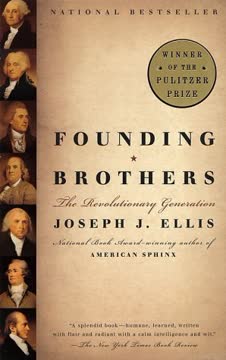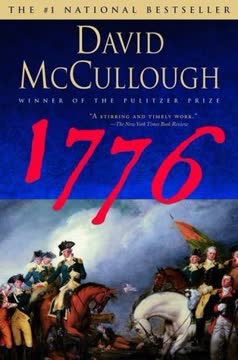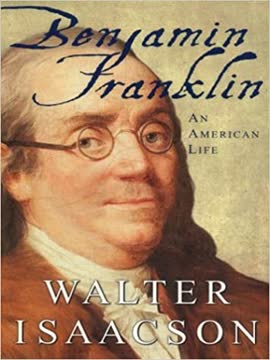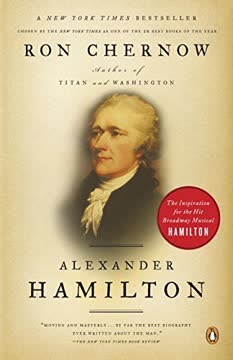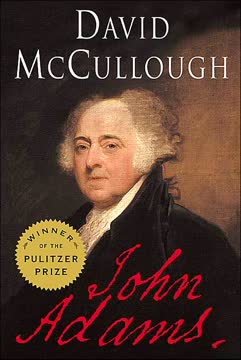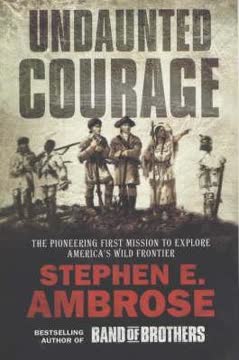Key Takeaways
1. The American Republic's Improbable Birth
No event in American history which was so improbable at the time has seemed so inevitable in retrospect as the American Revolution.
Hindsight's distortion. While the American Revolution and the subsequent rise of the U.S. seem inevitable today, they were highly improbable at the time. Leaders like Paine, Jefferson, and Adams spoke of destiny, but the outcome was uncertain. The signers of the Declaration faced execution for treason if the British had been more effective early in the war.
Unprecedented challenges. The creation of a separate American nation was revolutionary, not evolutionary. It faced immense obstacles:
- Defeating the world's most powerful military (British army and navy).
- Establishing a republican government over a vast landmass, unlike previous small city-states.
- Uniting thirteen disparate colonies with no history of cooperation.
A fragile experiment. The success was not guaranteed. It depended on chance, luck, and critical decisions made during crises. The framework for enduring institutions was built rapidly in the late 18th century, but its survival was far from assured.
2. The Duel: Personal Honor Meets Political Conflict
Their fatal encounter represented a momentary breakdown in the dominant pattern of nonviolent conflict within the American revolutionary generation.
A clash of titans. The 1804 duel between Vice President Aaron Burr and Alexander Hamilton, a leading Federalist, was the most famous in American history. It resulted in Hamilton's death and Burr's political ruin. While seemingly a personal feud, it was rooted in years of intense political animosity and differing visions for the nation.
Honor and reputation. Duels were illegal but governed by a code of honor. Hamilton felt compelled to accept Burr's challenge, stemming from Hamilton's repeated public criticisms of Burr's character and principles. Hamilton believed Burr was unprincipled and dangerous, a "Catiline of America," threatening the fragile republic.
Beyond personal animosity. The duel symbolized the extreme passions of the era. It was a rare instance where political differences escalated to violence among the revolutionary elite, who otherwise managed conflict through ongoing, albeit often vitriolic, debate. The public reaction condemned dueling and cemented Hamilton's martyrdom while vilifying Burr.
3. The Dinner: Forging Compromise Amidst Division
The Compromise of 1790 is most famous for averting a political crisis that many statesmen of the time considered a threat to the survival of the infant republic.
Legislative gridlock. In 1790, President Washington's cabinet faced paralysis. Treasury Secretary Alexander Hamilton's plan for federal assumption of state debts was blocked by southern congressmen, led by James Madison. The location of the permanent national capital was also a source of intense sectional conflict.
Jefferson's intervention. Secretary of State Thomas Jefferson, recently returned from France, brokered a deal. At a dinner with Hamilton and Madison, a compromise was struck:
- Madison agreed not to strenuously oppose assumption, securing its passage.
- Hamilton agreed to support locating the permanent capital on the Potomac River.
Averted crisis. This "Compromise of 1790" resolved the immediate legislative impasse, which many feared could lead to the dissolution of the union. It demonstrated the power of personal negotiation among key leaders to overcome seemingly intractable political divisions in the nascent government.
4. The Silence: Slavery's Unresolved Legacy
The ultimate legacy of the American Revolution on slavery was not an implicit compact that it be ended, or a gentlemen’s agreement between the two sections that it be tolerated, but rather a calculated obviousness that it not be talked about at all.
Early abolitionist push. In 1790, Quaker and abolitionist petitions forced Congress to debate slavery. Southern representatives vehemently defended the institution, arguing it was essential for their economy and protected by the Constitution's compromises. They warned that federal interference would lead to disunion.
Conflicting interpretations. The debate exposed deep divisions over the Revolution's meaning regarding slavery:
- Some saw the Declaration's principles as mandating eventual abolition.
- Others emphasized the Constitution's compromises protecting state control over slavery.
- Virginians like Madison straddled the issue, acknowledging slavery as evil but opposing federal action.
A deliberate avoidance. Despite powerful arguments against slavery, including a final plea from Benjamin Franklin, Congress ultimately voted to deny the federal government any authority to interfere with emancipation or the treatment of slaves within states. This established a precedent of silence on the issue at the national level, deferring the crisis but allowing slavery to grow.
5. The Farewell: Washington's Plea for Unity and Neutrality
Washington was making his ultimate statement as America’s first and last benevolent monarch.
Voluntary surrender of power. George Washington's decision to retire after two terms set a crucial precedent for the peaceful transfer of power in a republic. His Farewell Address, published in 1796, was his final message to the American people, urging them to sustain the union without him.
Core advice: The address emphasized two main themes:
- National Unity: Avoid excessive partisanship, sectionalism, and the formation of permanent political parties.
- Foreign Policy: Maintain strict neutrality and avoid permanent alliances with foreign powers, focusing instead on developing the continent.
Beyond the words. Washington's authority stemmed from his unique status as the indispensable leader of the Revolution and the early republic. His retirement was a deliberate act to demonstrate that the office, not the man, was paramount. His advice, rooted in his experiences, aimed to guide the nation through its vulnerable early decades, prioritizing stability and westward expansion over ideological crusades or foreign entanglements.
6. The Collaborations: Friendships Shaping Politics
Having failed to revive the great collaboration of the revolutionary era, Adams and Jefferson went their separate ways with different intimates.
Partnerships in action. The revolutionary era was marked by crucial political collaborations based on personal trust:
- Washington and Hamilton (military and executive leadership)
- Hamilton and Madison (Constitutional advocacy)
- Madison and Jefferson (Republican opposition)
- Adams and Jefferson (Independence movement, diplomacy)
Adams-Jefferson split. The Adams-Jefferson partnership, once symbolizing sectional unity and revolutionary ideals, fractured during Washington's presidency due as political parties emerged. Adams, as Vice President, felt marginalized, while Jefferson, as Secretary of State, covertly organized opposition to Federalist policies.
New alliances. As Adams prepared to succeed Washington, he sought to revive the collaboration with Jefferson, proposing a bipartisan administration and a joint peace mission to France. Jefferson, however, chose loyalty to the nascent Republican party and his partnership with Madison, declining Adams's overtures. This decision solidified the partisan divide and left Adams isolated, relying heavily on his wife Abigail as his closest political confidante.
7. The Friendship: Rivalry and Reconciliation
The more providential Jeffersonian version of the story triumphed in the history books, as Adams knew it would, helped along by one final act of fate that everyone, then and now, regarded as the unmistakable voice of God.
Post-presidency silence. After the bitter election of 1800 and Adams's departure from office, the friendship between Adams and Jefferson ceased for over a decade. Adams felt betrayed by Jefferson's perceived role in the campaign's slanders, while Jefferson resented Adams's "midnight judges" appointments.
Rush's intervention. Dr. Benjamin Rush, a mutual friend, initiated a correspondence in 1812, acting as an intermediary to bridge the gap. Adams, initially hesitant but ultimately eager, sent the first letter, leading to a remarkable exchange of 158 letters over 14 years.
A final dialogue. The correspondence allowed the two patriarchs to reflect on their lives, the Revolution, and their political differences. While often argumentative, it ultimately restored their mutual affection and respect. Their deaths, within hours of each other on July 4, 1826, the 50th anniversary of the Declaration, became a powerful symbol of reconciliation and the enduring legacy of the revolutionary generation.
8. Competing Visions for America's Future
Underlying the debate that surfaced in full-blown fashion over Jay’s Treaty lurked a classic confrontation between those who wished America’s revolutionary energies to be harnessed to the larger purposes of nation-building and those who interpreted that very process as a betrayal of the Revolution itself.
Federalist vs. Republican. The 1790s saw the emergence of two distinct political camps with fundamentally different ideas about America's direction:
- Federalists (Hamilton, Washington, Adams): Favored a strong national government, commercial development, and a foreign policy leaning towards Britain for stability.
- Republicans (Jefferson, Madison): Advocated for states' rights, an agrarian society, and a foreign policy sympathetic to revolutionary France.
Ideological clash. These differences were not just policy disputes but reflected conflicting interpretations of the American Revolution's core meaning. Federalists saw nation-building as the fulfillment of independence, while Republicans viewed a powerful central government and commercial interests as a betrayal of revolutionary liberty.
Enduring tension. This fundamental disagreement, exposed in debates over Hamilton's finances, Jay's Treaty, and the Alien and Sedition Acts, became embedded in American political culture. It represented a tension between order and liberty, national power and local autonomy, that would continue to shape the nation's development.
9. The Enduring Power of Personal Relationships
Politics, even at the highest level in the early republic, remained a face-to-face affair in which the contestants, even those who were locked in political battles to the death, were forced to negotiate the emotional affinities and shared intimacies produced by frequent personal interaction.
Intimacy in early politics. Unlike modern politics, the leading figures of the revolutionary generation knew each other intimately. They had shared the crucible of war and nation-building, creating bonds of trust and affection that often complicated their political disagreements.
Friendship and rivalry. Relationships like those between Adams and Jefferson, or Hamilton and Burr, were deeply personal. Political battles were fought not just over policies but between individuals who had once been allies or colleagues. This personal dimension added intensity but also, at times, provided a basis for compromise or eventual reconciliation.
Beyond the public stage. The private correspondence and personal interactions reveal a layer of complexity beneath the public political rhetoric. Leaders navigated a world where professional duty and personal feelings constantly intersected, shaping decisions and alliances in ways that are less apparent in later, more institutionalized political systems.
10. The Challenge of Securing the Revolution
Securing a revolution has proven to be a much more daunting assignment than winning one.
Post-victory fragmentation. The unity forged in the common cause against Britain fractured after independence was won. Different factions had fundamentally different ideas about the kind of nation they were building, leading to intense internal conflict.
Building stable institutions. The period after 1783 was critical for establishing enduring political institutions. The Constitution provided a framework, but its meaning and the balance of power between federal and state governments were hotly contested. Leaders like Washington, Adams, Jefferson, and Madison grappled with the challenge of creating a stable republic where none had successfully existed on such a scale.
Avoiding self-destruction. Unlike many subsequent revolutions, the American Revolution did not "devour its own children" through widespread violence among the leadership (the Burr-Hamilton duel being a notable exception). The ability to contain passionate disagreements within a political framework, despite the intensity of the era, was a key achievement in securing the revolution's legacy.
11. The Rise of Partisan Politics
The very idea of a legitimate opposition did not yet exist in the political culture of the 1790s, and the evolution of political parties was proceeding in an environment that continued to regard the word party as an epithet.
Parties as illegitimate. In the 1790s, political leaders viewed "factions" or "parties" with suspicion, seeing them as self-interested groups detrimental to the public good. There was no concept of a loyal opposition; political opponents were often seen as enemies of the republic itself.
Emergence of Federalists and Republicans. Despite this anti-party sentiment, distinct political alignments solidified around key issues:
- Hamilton's financial plan (Federalists vs. Republicans)
- Foreign policy towards Britain and France (Federalists vs. Republicans)
- Interpretation of the Constitution (Federalists favoring stronger federal power, Republicans favoring states' rights)
Personalized conflict. This nascent party system was highly personalized, often framed as a battle between individuals like Hamilton and Jefferson, or Adams and Jefferson. The election of 1800, the first contested presidential election, marked a critical step in the development of organized political parties, fundamentally changing the nature of American politics from a system based on personal reputation to one based on party affiliation.
Last updated:
FAQ
What is Founding Brothers: The Revolutionary Generation by Joseph J. Ellis about?
- Explores Revolutionary Leaders: The book examines the lives, relationships, and political dynamics of key figures in the American Revolution and early republic, such as Washington, Adams, Jefferson, Hamilton, Madison, Burr, and Franklin.
- Focus on Interactions and Conflicts: It highlights how their personal and political interactions—collaborations, rivalries, and compromises—shaped the new nation.
- Themes of Nation-Building: Ellis delves into the tension between revolutionary ideals and the practical challenges of forming a stable government.
- Narrative Style: The book uses historical correspondence and vivid storytelling to humanize the founders and bring the era to life.
Why should I read Founding Brothers: The Revolutionary Generation by Joseph J. Ellis?
- Humanizes the Founders: The book reveals the personal side of the founding fathers, showing their friendships, rivalries, and emotional struggles.
- Insightful Historical Analysis: Ellis combines rigorous scholarship with engaging narrative, making complex events accessible and compelling.
- Understanding American Political Origins: It provides crucial context for the ideological debates and compromises that shaped the U.S. Constitution and political culture.
- Fresh Perspective: The book offers new insights into familiar historical figures and events, challenging traditional heroic narratives.
What are the key takeaways from Founding Brothers: The Revolutionary Generation by Joseph J. Ellis?
- Fragility of the Early Republic: The success of the American Revolution and the new government was not inevitable but depended on chance, compromise, and the actions of a few leaders.
- Personal Relationships Shaped Politics: Friendships, rivalries, and personal trust among the founders had profound political consequences.
- Unresolved Issue of Slavery: The revolutionary generation consciously avoided confronting slavery, deferring the crisis and embedding it into the nation’s future conflicts.
- Birth of Political Parties: The emergence of Federalists and Republicans reflected deep ideological divisions that shaped the early years of the republic.
How does Joseph J. Ellis portray the personalities of the Founding Brothers in Founding Brothers: The Revolutionary Generation?
- Complex and Humanized Figures: Ellis presents the founders as passionate, fallible, and often contradictory individuals rather than mythic heroes.
- Diversity of Temperaments: The book highlights the dynamic created by their differing personalities and ideologies, which helped sustain the republic through mutual checks and balances.
- Historical Self-Awareness: Many founders were conscious of their place in history, often writing letters with future generations in mind.
- Interplay of Rivalries and Friendships: Personal bonds both fueled conflict and enabled reconciliation, shaping the nation’s political landscape.
What is the significance of the Burr-Hamilton duel in Founding Brothers: The Revolutionary Generation by Joseph J. Ellis?
- Symbol of Political Conflict: The duel is the only instance where political differences among the founders ended in violence and death.
- Personal and Political Rivalry: Burr and Hamilton’s animosity combined personal insults with deep political disagreements, culminating in the fatal encounter.
- Reflection of Early Republic Values: The event underscores the importance of honor and reputation in the early republic, where personal character was seen as vital to political leadership.
How does Founding Brothers: The Revolutionary Generation by Joseph J. Ellis explain the Compromise of 1790?
- Political Bargain: The compromise resolved a congressional deadlock by agreeing to federal assumption of state debts and the location of the national capital on the Potomac River.
- Brokered by Jefferson: Thomas Jefferson hosted a private dinner where Hamilton and Madison negotiated the deal, exemplifying the importance of personal diplomacy.
- Exposed Sectional Tensions: The agreement revealed deep divisions between northern commercial and southern agrarian interests, foreshadowing future conflicts over federal power.
How does Founding Brothers: The Revolutionary Generation by Joseph J. Ellis address the issue of slavery among the founders?
- Slavery as a Taboo Subject: The revolutionary generation largely avoided confronting slavery in national politics to preserve the fragile union.
- 1790 Congressional Debate: Quaker petitions to end the slave trade sparked heated debate, exposing sectional divisions and constitutional limits on federal power.
- Deferred Crisis: Leaders like Madison advocated moving the issue off the national agenda, recognizing its potential to fracture the union and leaving it unresolved for future generations.
What is the significance of George Washington’s Farewell Address in Founding Brothers: The Revolutionary Generation by Joseph J. Ellis?
- Retirement as a Republican Act: Washington’s voluntary departure set a precedent for peaceful transfer of power and commitment to republican principles.
- Themes of Unity and Neutrality: The address warned against excessive partisanship and foreign entanglements, urging Americans to maintain national unity.
- Collaborative Authorship: The address was shaped by input from Madison and Hamilton, reflecting the collective effort of the founding generation.
- Strategic Silence on Slavery: Washington avoided the topic of slavery, highlighting the era’s political sensitivities.
How does Founding Brothers: The Revolutionary Generation by Joseph J. Ellis explain the emergence of political parties in the early republic?
- Ideological Divisions: The split between Federalists and Republicans was rooted in differing visions of government power, foreign alliances, and the meaning of the Revolution.
- Personal Rivalries: Conflicts, especially between Hamilton and Jefferson, fueled the formation of organized political opposition.
- Impact on Governance: The rise of parties led to partisan press attacks, polarization, and debates over loyalty, shaping the young nation’s political culture.
What role does the Adams-Jefferson relationship play in Founding Brothers: The Revolutionary Generation by Joseph J. Ellis?
- Symbol of Collaboration and Conflict: Their partnership embodied both the unity of the Revolution and the deep ideological divides that followed.
- Political and Personal Dynamics: Adams was fiery and confrontational, Jefferson more reserved and idealistic; their relationship evolved from friendship to rivalry and eventual reconciliation.
- Impact on Early Politics: Their rivalry influenced the formation of political parties and presidential elections, shaping the nation’s early political landscape.
How does Joseph J. Ellis depict the Adams presidency in Founding Brothers: The Revolutionary Generation?
- Inherited Challenges: Adams faced a nation divided by partisan conflict and an undeclared naval war with France, making his presidency especially difficult.
- Bipartisan Efforts and Isolation: He attempted to bridge divides by including Republicans in his administration, but was thwarted by party opposition and personal rivalries.
- Controversial Decisions: His signing of the Alien and Sedition Acts damaged his reputation, while his pursuit of peace with France left him politically isolated and led to his defeat in 1800.
What is the significance of the Adams-Jefferson correspondence in Founding Brothers: The Revolutionary Generation by Joseph J. Ellis?
- Reconciliation and Reflection: Their late-life letters represent a profound reconciliation, allowing them to revisit and debate the meaning of the Revolution and their legacies.
- Intellectual Dialogue: The correspondence covers themes like aristocracy, equality, the French Revolution, and slavery, revealing enduring differences and mutual respect.
- Historical Testament: Ellis presents the letters as a capstone to the revolutionary generation’s story, symbolizing the personal and ideological complexities that shaped the nation’s founding.
Review Summary
Founding Brothers: The Revolutionary Generation received largely positive reviews for its insightful analysis of key episodes in early American history. Readers praised Ellis's writing style, depth of research, and ability to humanize the Founding Fathers. Many found the book engaging and educational, appreciating the focus on relationships and conflicts among the revolutionary leaders. Some criticized the verbose language and perceived bias against certain figures. Overall, reviewers considered it a valuable contribution to understanding the complexities of America's founding era, though opinions varied on its accessibility to general readers.
Similar Books
Download PDF
Download EPUB
.epub digital book format is ideal for reading ebooks on phones, tablets, and e-readers.
